Gaming The American War Of Independence Part Two – Initial Campaigns
April 11, 2016 by crew
Welcome back for another foray into the bitter white musket smoke of the American Revolution, presented by @oriskany and @chrisg. Our objective is to provide some balanced background, tips, and perhaps even some inspiration for wargamers interested in exploring this iconic yet often misunderstood conflict.
As begun in Part One, we’ll examine each part of the war at four distinct levels of gaming, from the operational “general’s table” to the up-close fury of skirmish combat. In part one, we also saw how the war ignited almost by accident at Lexington and Concord. Now the story continues, presented from both sides.
Bunkers Hill - A Patriots View
“… the whites of their eyes!”
After Lexington and Concord, thousands of our Patriot militia closed a ring around the outnumbered British garrison at Boston. The British didn’t fancy coming out for another “Indian fight” in the woods, nor did we relish the thought of assaulting trained regulars in Boston. A tense standoff set in, the armies glaring at each other.
To force the British hand, orders came down to build a fort on Bunker Hill, on the Charlestown Peninsula, looking straight down on the British fleet in Boston. The idea was to force the British to come out of Boston and engage our larger force entrenched on high ground. We’d win the war in one grand battle. My God, what fools we were.
Sure enough, on June 17, 1775, British General Howe ordered his fleet to bombard our positions while his army loaded into flatboats for the assault on Bunker Hill. There were nearly 2,200 of them in all, facing some 1,200 of us. This would be the first set-piece, proper battle of the American Revolution.
Among our commanders that day was General Israel Putnam. Building this fort and instigating this battle had been his idea. There was just one problem … somehow most of the American earthworks had been built on nearby Breed’s Hill, but Bunker Hill. Yet even today, we still call this the Battle of Bunker Hill.
Admittedly, some of our militia fled straight off, terror-struck by British barrage of the sheer spectacle of their advancing army. Putnam steeled us, however, famously yelling: “Don’t fire ‘til you see the whites of their eyes!” A sound command, since each man that day faced the British Empire with just a dozen shots in his cartridge box.
Bunkers Hill - A Royalist View
A Pyrrhic “Victory”
The King’s soldiers had a new commander the day we went up Breed’s Hill. Whereas Thomas Gage had commanded in Boston as an administrator, while Britain still sought to come to terms with their colonial subjects … General Sir William Howe was a combat commander, a blooded veteran of the French and Indian War.
The day would prove a bloody one. Forming up our regiments, we pushed up Breed’s Hill only to meet a withering hail of accurate musketry. Driven back, we reformed and tried again. Driven back again, and resolute despite our hideous losses, we pushed back up a third time, and finally carried the day.
This “victory” was a costly one. Although we took the whole Charlestown Peninsula, we counted 226 killed and 828 wounded, a staggering 50% of our landing force. Among the dead was Major Pitcairn, our commander at Lexington Green just two months before.
The Americans had also suffered deep losses, 145 killed, 274 wounded, and 30 captured. Among the dead was Joseph Warren, the most prestigious and pivotal militia commander during the recent fight along the Battle Road.
Both sides learned plenty about their foe that day. The Americans had woefully underestimated the sheer tenacity of the British solider, the firepower of the Royal Navy, and the cold, sharp competence of their officers. Training, supply, command, coordination of military arms, the we completely outclassed the militia in every category.
In truth, however, we also learned that these colonial upstarts were more than simple farmers with pitchforks. If they could inflict such damage on us now, what would happen once they got some real weapons? Some actual training? Some competent and experienced leadership or, God forbid, some European allies?
Still, if they insist on being so proud of their performance on this hill, you’d think they could get the name of the hill correct.
New York - A Patriots View
The Revolution’s End?
The bloodbath at Bunker Hill closed forever any chance of mediation with the Crown. After a bitter debate, the Continental Congress officially adopted the militias at Boston as the “Continental Army” and appointed Colonel George Washington (formerly of the Virginia Militia) as commanding general.
Washington was hardly pleased with his army, however. We were more of a mob with a flag, rife with disease and desertion … and without money, supply or logistics worthy of the name. Nevertheless, with a few cannon and some artful bluff, Washington was able to compel Howe to withdraw from Boston in March 1776, without a shot fired.
That summer saw the Declaration of Independence proclaimed in Philadelphia. Only now had our goals in this war been agreed upon and written down. Meanwhile, the British were making so secret of their goals, sending a huge fleet and army to strike back into the rebel colonies at one of America’s biggest ports, New York.
Washington was ordered to move his army from Boston down to New York to contest the British invasion. Although he put on a brave face, privately he feared the worst. For those who may not know, New York is a series of islands, hardly a choice battleground when you have no navy and your enemy has the largest navy on earth.
Sure enough, the British landed at Long Island in August, 1776. We thought we had an army to meet them, but thousands of our militia fled at the first sight of a red jacket. We thought we were well deployed, but our army was fatally split between Manhattan and Long Island. We thought we were ready. We were wrong.
New York - A Royalist View
The Empire Strikes Back
The battles around New York, fought between August and November 1776, unfolded as a series of truly unmitigated disasters for our colonial friends. Defeat, rout, humiliation, and retreat was inflicted on them time and again … it really is a wonder that we didn’t win the war at a stroke right then and there.
First came the Battle of Long Island (August 27). Washington had drawn up his rebels along the island’s central ridge (Brooklyn Heights), and covered all the passes. But he neglected the Jamaica Pass, far to the east, assuming our infantry couldn’t march that far that fast. Of course we did so, turned the rebel left wing, and crushed them.
We then followed the rebels across the East River to Manhattan, landing at Kip’s Bay. This was hardly a battle, the Connecticut militia routing the instant our grenadiers landed in their boats. We watched them run right past a screaming, infuriated, and heartbroken Washington, who soon had no choice but to ride after his men.
Burning most of New York City to the ground in their retreat (you don’t read that often in the history books), the rebels withdrew to northern Manhattan, where they put on a slightly better performance at the Battle of Harlem Heights (September 17). Still, New York City was ours, its streets now teeming with Loyalist Americans.
In late October we met the rebels again at the Battle of White Plains. This was yet another victory for the Crown, and pushed the Americans completely out of Manhattan and the environs of New York City. We then tore open the gates of the mighty Hudson River by taking Fort Washington and Fort Lee (November 16 and 20).
These latest two victories were the crowning achievement of Howe’s campaign. Making good use of our Hessian allies, we captured 3,000 rebels and almost all their remaining artillery. Washington withdrew south into New Jersey in a despairing attempt to keep between us and Philadelphia, the rebel capital and largest city in America.
Trenton
The American Crisis
New York was gone, along with 90% of the Continental Army. Exhausted and starving, the 2,000 men Washington had left retreated into New Jersey. The cause of the American Revolution, so proudly proclaimed just six months before with the Declaration of Independence, was now a flickering candle just a breath from being snuffed out.
We withdrew across the Delaware River into Pennsylvania, but even this would bring only brief respite. As soon as the December weather grew cold enough, the Crown’s soldiers would walk across the ice and end the war in a final stroke. Faced with annihilation, Washington decided on what seemed like an insane course: Attack.
On Christmas night, Washington led us back across the Delaware into New Jersey. Under cover of darkness, we forced-marched on Trenton through a sleet storm. Here, a detachment of 1,200 Hessians (troops from modern-day Germany) had been stationed to keep an eye on us, but they had no idea we’d come back across the river.
We hit the Hessians shortly after dawn on December 26, 1776. Against all odds, surprise was total. The German commander (Johann Rall) was mortally wounded, and soon after the Hessians surrendered. They’d lost 23 killed, 83 wounded, and all 900 survivors were taken prisoner. We lost only two killed and a handful of wounded.
Stunning as it may have been, victory at Trenton marked only the first step back from the abyss, by no means was Washington now “winning the war.” In fact, his army was about to disintegrate because most of our enlistments were due to expire on December 31. Even now, the Revolution’s survival hung by the slenderest of threads.
Check back with us next week as chrisg and oriskany wargame their way into 1777, a year which will see both the Patriots and the Crown win some of their greatest victories of the war. Meanwhile, post questions, comments, and ideas below, or share your own gaming experiences in the age of black powder.
By James Johnson & Chris Goddard
If you would like to write for Beasts of War then please contact us at [email protected] for more information!
"Both sides learned plenty about their foe that day. The Americans had woefully underestimated the sheer tenacity of the British solider, the firepower of the Royal Navy, and the cold, sharp competence of their officers..."
Supported by (Turn Off)
Supported by (Turn Off)
"The battles around New York, fought between August and November 1776, unfolded as a series of truly unmitigated disasters for our colonial friends. Defeat, rout, humiliation, and retreat was inflicted on them time and again..."
Supported by (Turn Off)





























![Make Your Own Star Wars: Legion Heroes! Rebel Agent & Officer Set Review [7 Days Early Access]](https://images.beastsofwar.com/2025/12/unboxing-atomic-mass-games-star-wars-legion-rebel-alliance-agent-_-officer-coverimage-225-127.jpg)











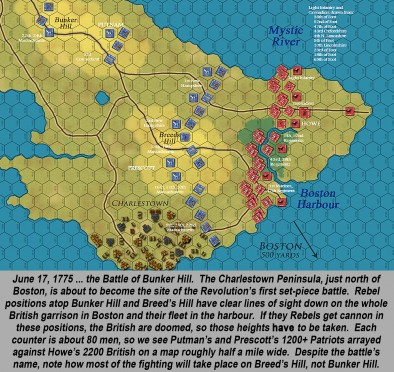
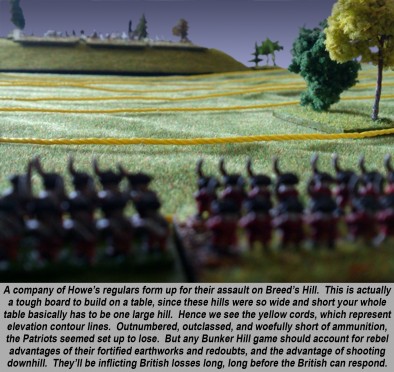
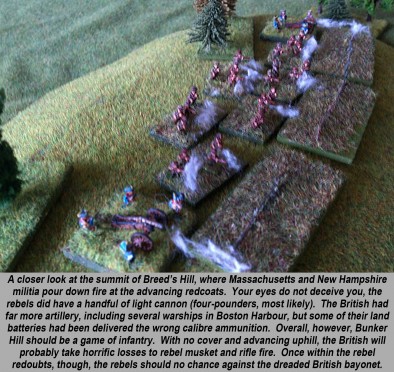
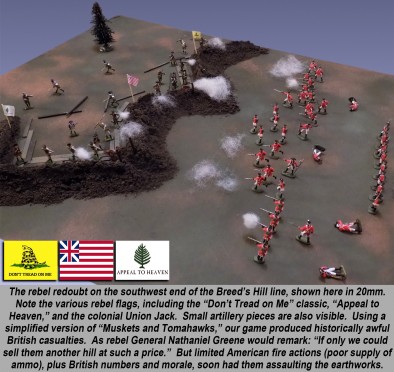
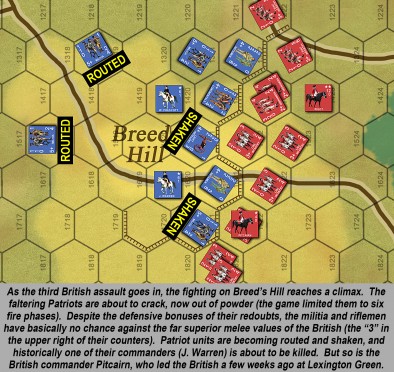
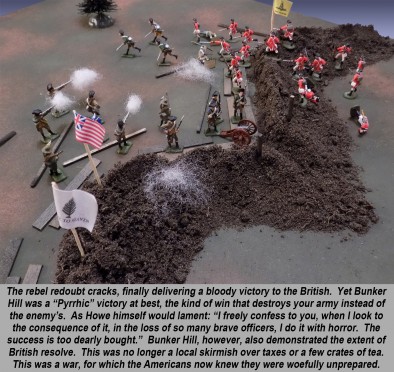
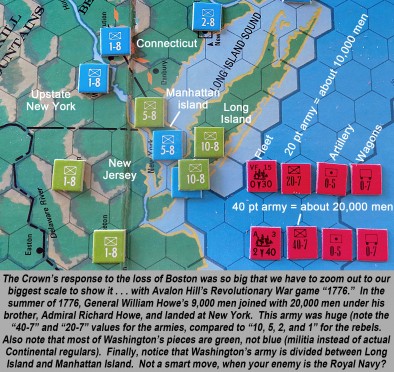
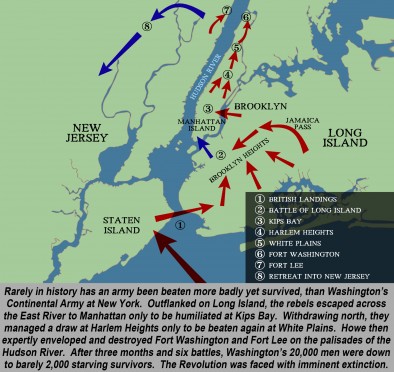

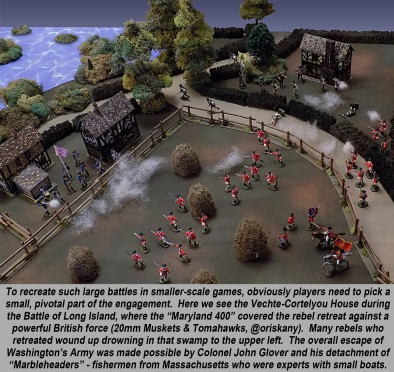
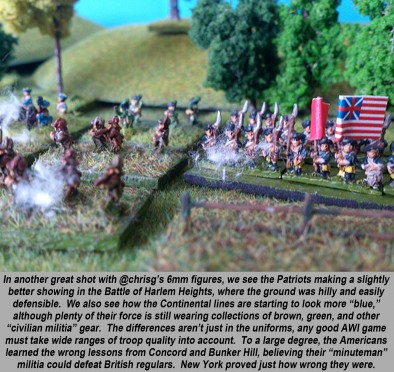
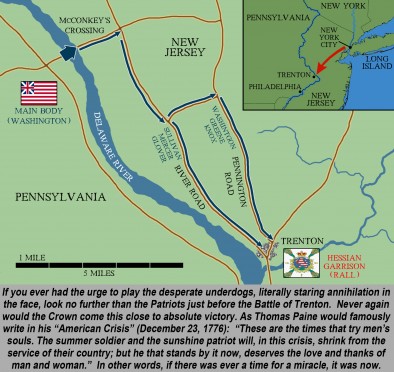
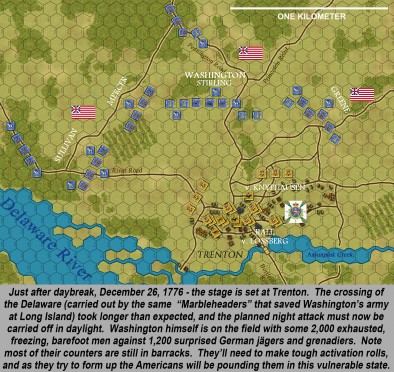
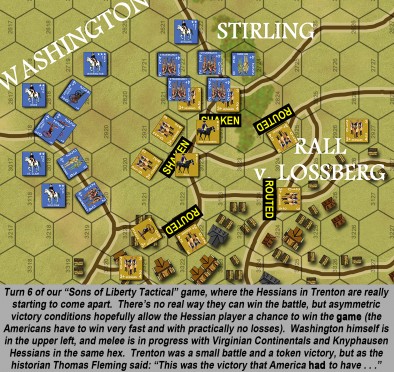




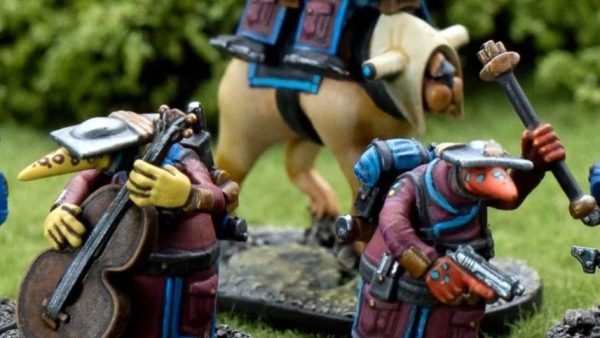
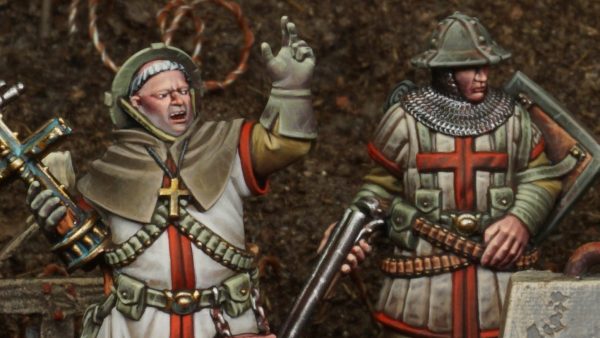
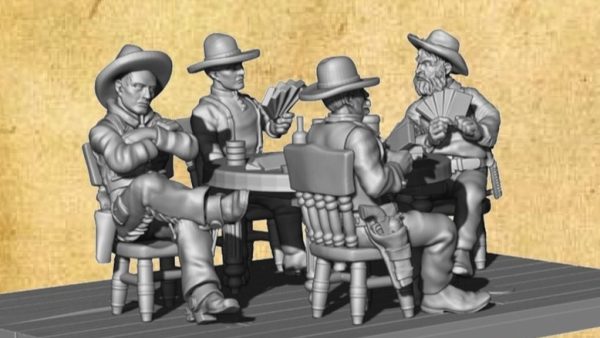
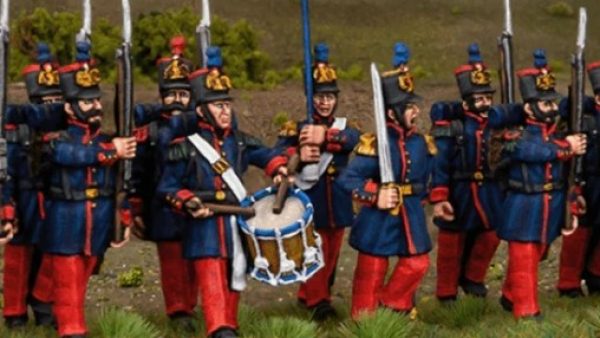

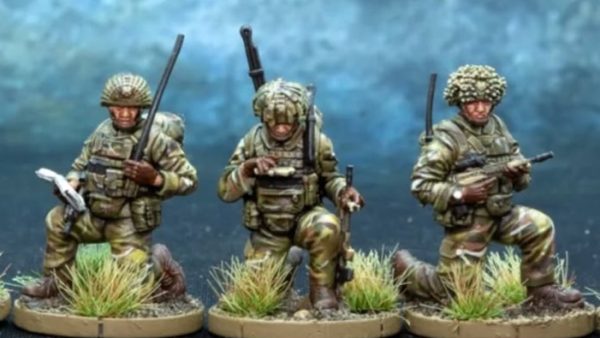


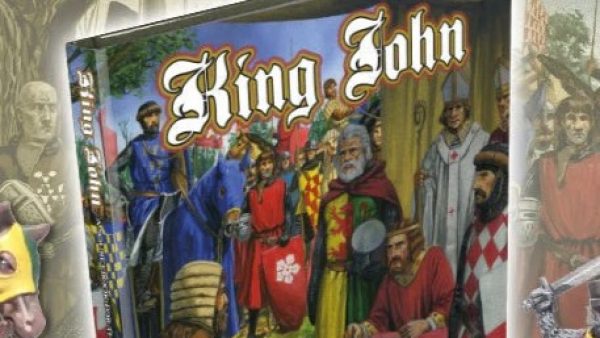
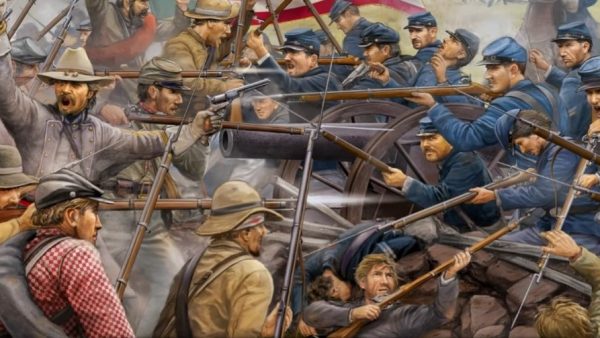




















Just wanted to say I am really enjoying these articles and the two perspective narrative really adds.
Well played all.
Thanks very much, @brewer1980 – I think this is one of those conflicts where both sides really have a legitimate point of view, and looking at events from both sides isn’t only “fair,” but also adds a lot of interesting flavor to the narrative and “fluff.” You can’t do this easily with all historical wars … (WW2, for example, is possible but tough, and you’d have to be verrrry careful) … so we definitely wanted to take this opportunity with AWI. 😀
Thanks again!
Another great series. Thanks for posting. One request; could you credit the boardgames some of the illustrations are taken from. I see a couple I might want to look for copies of.
Sure thing, @dmedesha . The larger “all 13 colonies” board game is Avalon Hill’s classic “1776,” a high-recommended game from the early 70s I think. Copies are still available on eBay, etc. You can play the introductory scenario (June-December 1776) after 10 minutes of reading and in about 90 minutes of game play. The full 8-year game, with ALL the rules (fortifications, Indians, dragoons, siege mortars, bateaux boats, French-British-American naval units, supply, partisans, etc etc) .. takes a lot longer. The point is, the game is as complex and detailed as you want it.
The smaller, “command-tactical” level hex game used to show Breed’s Hill and Trenton is actually a system of my own design. We are working the last bugs out of it. If we can figure out a way to publish this or release this on Beasts of War, each battle would have to be its own “mini game” (all using the same basic rules) because each map sheet and component is so different.
Inspirational as ever:-)
Thank you, @commodorerob ! 😀
Great stuff
Thanks, @rasmus!
A little conceded to name the Forts Washington and Lee (two active commanders) where it not ?
I can’t argue with that, @rasmus – except to say that this was our first war and we had no inactive commanders yet. Okay, there was Fort Montgomery, named for General Richard Montgomery, killed just six months previously (New Years Eve, 1775, at the south gate of Quebec).
Washington and Lee also both had gun galleons named after them in the naval battle of Valcour Island (covered in Part 04). Both were sunk / burned. 🙁
There was also Fort Clinton, also named for the general / engineer who built it, along the same Hudson River. Not to be confused with the OTHER Fort Clinton, named for the same guy, which would eventually become West Point. I know, I need an aspirin, too.
The British named a lot of their forts after kings and queens. (Fort Edward, Fort George). But of course we didn’t have any of those, either. 😀
Not sure where the name for Fort Ticonderoga came from. A local name? The fort was standing well back to the French and Indian War, I know that much.
Fresh from the font of least knowledge that is Wikipedia
The name “Ticonderoga” comes from the Iroquois word tekontaró:ken, meaning “it is at the junction of two waterways”.
I have some photos of the reconstructed Fort William Henry in Lake George, NY south of Ticonderoga, it had been sacked by the French in the FIW some 20 years before – so it played no role in the AWI. (Still more fun to visit than the near by six-flags 😉 )
Thanks, @rasmus – I think I read that the fort was technically still there, but basically in ruins, so was bypassed and played no role, as you say.
Even Ticonderoga was in terrible shape by the AWI. When Benedict Arnold and Ethan Allen’s Green Mountain Boys stormed it May, 1775, they basically walked right in (even though, as @torros says, this same fort repelled 16,000 troops just 20 years previously). Successive winters had frozen and thawed the gates and their mounts in the stone, they no longer fit and the doors could no longer be CLOSED properly … let alone locked. 😀
The Americans spent the next two years rebuilding / refurbishing the fort, so when Johnny Burgoyne came down with his 9000 British, Germans, Loyalists, and Iroquois in the summer of ’77, the fort was actually pretty solid, and garrisoned by elements of 10 Continental regiments.
Sadly for the Americans, nearby Mount Defiance stood higher than the fort’s ramparts. The Americans weren’t worried (General St. Clair) because they were sure the British couldn’t get guns up there (very steep and heavily wooded).
However, Burgoyne’s chief engineer (I can’t remember his name, but he was a Scotsman), said . . .
“Anywhere a goat can go, a man can go … and wherever a man can go, he can drag a gun!
So they somehow hauled two 12-pounders up there, I think, and just like that … Ticonderoga … the “Gibraltar of the North” … was untenable and had to be abandoned without a shot fired.
Like Patton supposedly said later … “Fixed fortifications are monuments to the stupidity of man.”
Forts only really work when well-placed – and not under heights
With no mad Scots around – Ticonderoga were that as it dominated the area and the line from NYC to Canada
This is from Wikipedia so could be a load of crap
The name “Ticonderoga” comes from the Iroquois word tekontaró:ken, meaning “it is at the junction of two waterways”. During the 1758 Battle of Carillon, 4,000 French defenders were able to repel an attack by 16,000 British troops near the fort.
Indeed, @torros , this fort was a beast. They called it the Gibraltar of the North, as I’m sure you’re read. However fearsome its reputation was in the FIW, however, its record in the AWI would be less auspicious. 😀
The “two waters” makes sense . . . Lake Champlain and the outlet to Lake George seem to meet there.
Thanks for the assist! 😀
Maybe I should try to see Ticonderoga next time we are going around New York State. ..
Its a waaaaaays up there. A nice drive, b ut definitely back a lunch. 😀
Less than a hour extra from Lake George – so not too bad going from the In-Wars
Great stuff, really loving this series so far. Any thoughts on doing the war of 1812 or perhaps some of the ACW campaigns in the future? Top stuff 🙂
Thanks, @bigdave . Projects on the War of 1812 or the American Civil War would indeed be interesting. The only two issues:
1) I’d have to read up quite a bit on 1812. I think I could swing an article series on the American Civil War, though …
2) I have no miniatures for those periods! I know @chrisg has some amazing ACW minis. But I would need a year to buy, build, and paint 100+ figures. 🙁
Do I see a community project coming up – get, paint and send to @oriskany? I’d gladly do a box of Perry ACW for something like that …
Better idea . . . or really . . . better version of the same idea: buy, build, and paint the minis, Keep them, just send me the photos. 😀 I could talk with “contributors” ahead of time about what kind of battles to set up (based on what minis they have purchased), how to stage the minis, and how to take the photos so they will best fit in with the gaming / historical text.
That sounds great as well – I’d be game for it give enough time …
Indeed, @rasmus . . . this would take a little bit planning, commitment, and organization. Could be awesome, though.
Once I have resettled let’s revisit the idea
Sounds good, @rasmus – My current “project pipeline” has be busy through the middle of August at least. Whatever / whenever works for the most people, realizing that it will never be 100% for everyone. 😀
I could help you with Anglo-American War of 1812 stuff; I worked in it for 4 years and I know a fair bit, though mainly localised to Niagara. Yankee minis for it would be a bit tricky to come by, though.
Indeed, @crazyredcoat – American soldiers in the War of 1812 look totally different from AWI Americans, even the “formal” Americans Continentals that start forming up at the very end of the AWI. And I’ve never seen them on sale . . . but I honestly have never searched. 😀
Old glory 15’s do an 1812 range as do Blue Moon
Real problem with 1812 Yanks is the uniform changes. For the British you can use Peninsular War minis for most of the war and switch to Waterloo for the latter stages like Washington and New Orleans. The Americans go from elaborate blue and red uniforms with a version of the stovepipe to simple blue (or even grey) jackets with leather (and VERY uncomfortable) Belgique (Waterloo) style shakos. Added in the Rifle units for the US with their frock coats and such…may only be a few years of war, but it’s a LOT of minis to show off if you were to cover the whole war from Queenston Heights to New Orleans. Some fascinating anecdotes and stories there, though.
Awesome, @torros and @crazyredcoat . It sounds as if we have a couple of volunteers for the 1812 article series? 😀
You chaps going to do anything on Penebscot (may have spelled that a little wrong)? It’s quite a fascinating thing, plus Bernard Cornwell has a fantastic book based around it called ‘The Fort’. Good read.
We were talking about it last article, @crazyredcoat . . . a couple guys brought up the Bernard Cornwell book and started “talkin’ trash:” about Paul Revere (courts-martialed for his role in that disaster). Our Northern Theatre article part is way too overloaded as is, but based on the large amount of interest in this topic, this will probably be one of the first the first big topics tackled in our traditional forum threat we run parallel to the article series. 🙂
So far so great I am into looking for everything about the Revolution I can find on the Internet and in my books. Waiting for more. I am really surprised with the miracle at Trenton. If I understood correctly the Crown lost because of the death of the Hessian commanding officer. Now, the move through the river was a nice tactical move but the killing of the commander must have been nothing more than sheer luck I assume.
Common causes listed for the Hessian defeat at Trenton are usually surprise. The Americans had withdrawn across the Delaware, which by now was partially frozen. There were no bridges, fords, or ferries – i.e., the river was basically “uncrossable” – especially at night. The Americans crossed over the night of December 25-26 and hit the Hessians first thing in the morning from two directions at 08:00 hours.
Many of the Hessians were not even dressed, they were roused from their beds and hurled straight into combat. The Hessians were amazing at tight, conventional, formation-based, “Frederician-Drill” fighting. The Americans knew that if they were ever allowed to fully assume these formations, the Hessians would be a much more dangerous foe.
Yes, I am sure the loss of Rall was a major blow. These were tightly-knit units, and the Hessians surrendered almost immediately after he was hit. American sharp shooters (riflemen) were known to specifically and deliberately target officers (so it wasn’t always luck, as in the case of BrigGen Simon Fraser at 2nd Saratoga), but I don’t know if this was the case at Trenton.
One thing that is often pinned to the Hessians at Trenton is that they were drunk and/or hung over after partying all night on Christmas. From what I’ve read, this is largely a myth. Specifically, Colonel Johann Rall (their commander) was up late that night drinking and playing cards, but I don’t think his 1000+ man garrison was.
Famously, when Rall died he still had the letter from a pro-Royalist spy in his coat, WARNING him of the attack on Trenton the night before . . . unopened. 🙁
Who would attack of St Stephens day ? Only the most desperate would, like a man who knows that his army need a victory, to keep moral up and give congress a reason to pay the army and inspiring re-enlistments of the troops whom would be free 1/1
@rasmus – still one of my favorite “historical” posters. 😀

Now, that clears things up for me 🙂 Thanks @oriskany
No worries, @yavasa – I always enjoy having a chance to ramble about this stuff. 😀 Check out the movie if you ever get the chance (7 parts on YouTube, each is about 10 minutes) . . .
https://www.youtube.com/watch?v=Xz8j37IBwKw&list=PLBEFC88C17D2C3149&nohtml5=False#sthash.rg5thfnr.dpuf
Oh, I definitely will! Thanks @oriskany
🙂
🙂 Cool deal, @yavasa – let me know what you think of it. If nothing else, it gives a more realistic portrayal of how the crossing might have actually looked, rather than the famous painting with George Washington standing proudly on the prow (in daylight no less, and with the wrong flag). 😀
Nice 🙂
The commentary from both sides really adds to the narrative.
Thanks, @limburger ! 😀
One more thing I forgot to add about Trenton, there is a pretty good made for TV movie about it called “The Crossing.” Of course it’s from the American side, but tries to take an honest look at the faults of the American army, the vicious infighting between American commanders, some of Washington’s faults, etc.
https://www.youtube.com/watch?v=Xz8j37IBwKw&list=PLBEFC88C17D2C3149&nohtml5=False
Done with Turn season 1, that I started due to the 1st part of this series – so this will do nicely now 😉
Is that Jeff Daniels as Washington?? (Wonder if he gets his tongue stuck licking a musket barrel…;-)) I watched Turn a while back; great production value and performances but still a little ‘dastardly brits’ angle – perhaps I need to look again…
Yes, @dethbidonut – it is. 😀 “Turn” is okay, at least it properly portrays the presence of so many Loyalists (especially around New York) – and shows how divided the American people were on the subject, even within one’s own family.
a great article guys @oriskany @chrisg don’t know much about the American revolution so its all new to me.
Awesome, @zorg – glad yo like it so far! 😀
I’m starting to wonder how we managed to snatch defeat from the jaws of victory. Looking forward to the next instalment.
Well, @huscarle , not to “spoil” anything, 😀 but we refused to play by the rules, waited until we got lucky, and then got some powerful friends. Also, when looked at from the larger perspective and from a certain angle, Great Britain might not have actually “lost” this war at all . . .
While I can appreciate the mountains of work that went into all Chris G.’s 6mm figures, I gotta say I LOVE the look of those 20mm guys, you can really see all the details. That shot of the “small” New York battle came out GREAT! I also really like the overview maps as they really help set the scene.
Thanks @gladesrunner ! 😀
@oriskamy All I know about 1812 is where yo buy figures,the Capitol building needed repainting after it and Lonnie Donnigan sang a song about one of the battles
@torros – I can pretty much type everything I know about 1812 in this post . . .
1812 includes the Battle of New Orleans (which took place AFTER the the Treaty if Ghent ?? that ended the war, news was still travelling across the ocean). The song is amusing, but naturally gets many things wrong. (Jackson’s rank, there were no cotton bales in the American fortifications, I’m not even mentioning the “alligator artillery”).
It’s also where the Bombardment of Ft. McHenry takes place, where a local civilian named Francis Scott Key was watching the bombardment as a prisoner aboard a British ship, and wrote the “Star Bangled Banner” on the event – eventually becoming our National Anthem.
(The tune was taken from an old British drinking song, which is brilliant, I think . . . a song “designed” to be sung by a lot of people in a group who are probably not “professional” singers to begin with – the perfect National Anthem IMHO).
Washington DC was pretty much burned down by British and Canadians (August 1814), the Capitol was totally burnt and the White House was had to be pretty much rebuilt from what I can see.
Some of the old AWI generals were still kicking for the War of 1812, but almost universally these (by then) very old “desk-commanders” did very badly in 1812, as opposed to their performance in 1775-1781.
There were three axes of advance as American again tried to invade Canada (how long did it take for them to realize this was a bad idea) . . . all three ended predictably in disaster.
I don’t think either side can honestly claim to have “won” the War of 1812, but again, I don’t really know enough to say.
well that is another great read and a lot of hard work by both @oriskany and @chrisg really looking forward to the the next article it great how it has come together with all the graphics and pictures by you both and also mine and @gladesrunner hard efforts behind the scenes from painting horses and making sure both of you had time for food,drink and rest and for Jim going into work. A very big thank you to you Oriskany for being there for Chris a great team.
victoria g
Thanks very much, @victoriag – and thanks for the support you’ve given to @chrisg on this project. I honestly couldn’t have done this without him, which means I couldn’t have done it without you. 😀
Well as of tomorrow I will be able to be back up and running properly. How ever, I must say an outstanding thanks of absolutely massive proportions to my good friend Oriskany who despite being for the rebel cause as any true misguided American must I suppose, although a large number tried to sit on the side lines and a vast amount actually fought for the correct and real legal cause and yes the crown.
The idea of the lines of chord represented the contour lines on a hill. As the British advance they are allowed to cross one line for free but must make a check for the next, to show their doubt of attacking up hill and taking casualties.On a roll of a 3 to 6 they pass. But once their numbers become depleted these numbers increase. If a unit becomes unplayable it must roll for each line up being a 5 or 6. anything else means the troops loose one contour line and must remain static for one turn. Suffering any further losses means that unit will have to start again from the base of the hill, but now as another unit in full. The Patriots must last at least ten turns to win, the British need to to take the hill despite the terrible losses inflicted.
Breeds and Bunker hill have often been looked at as a poor victory. The truth is that the British had no choice but to take these hills and remove the threat of the Rebels bringing heavier artillery to bare upon the fleet and the supply lines for rations to the city of Boston. Also what should be noted is that the British never gave the hills back to the Rebels holding them until the withdrawal from Boston, un-mollested as long as we did not burn the City. Strange how the history books so deftly glide over the torching of New York when the so called Patriots withdrew or in truth ran away. Hay ho pay farmers as soldiers and what do you get other than farmers with muskets.
Up the British, hurray for king George the 3rd and “right up Washington as far as it will go and more up Washington!”.
Thanks, @chrisg – I look forward to you coming back online “full time” to help with all these comments and questions! 😀
Your point about the vital importance of taking these heights on the Charlestown Peninsula is completely correct. IF the Rebels had any artillery (at the time they did not), these heights would have allowed the Rebels to shell every British ship in the harbor and make the British position in and around Boston (their main military and administrative position at the time) almost completely untenable.
So the “pyrrhic victory” connotation that Breed’s Hill typically carries I think doesn’t come from the fact that the battle was unnecessary, but that it was too costly. To win this war, the Crown was going to have to win a lot of battles. They just couldn’t afford to pay this kind of price, and if they did so, they would quickly lose the war no matter how many battles they won.
Two further points:
1) To prove just how necessary Breed’s Hill really was (the British didn’t know the Rebels had no artillery, or even if they did, they didn’t know when they might get artillery) – one needs only forward wind a few months. Eventually Henry Knox would gather the British artillery captured by Benedict Arnold and Ethan Allen at Fort Ticonderoga and drag it on sledges to Washington’s positions around Boston (winter of 75-76). He set these guns up on the Dorchester Peninsula, SOUTH of Boston proper (Charlestown was NORTH of Boston Proper). Even though he had no actual ammunition for these guns their simple presence was enough to compel Howe to pull his whole army out of Boston on March 17, 1776 and withdraw to Nova Scotia.
For a very brief moment, there was no British Army in the colonies and America was “free.”
Anyway, I mention all this to support what you’re saying about the vital importance of taking high ground around Boston, and why the British had to be so adamant in taking Breed and Bunker Hill.
2) The bloodbath suffered by the British at Bunker Hill seems to have left an indelible imprint on Howe’s “battlefield psyche” going forward. Many people wonder why he didn’t “finish off” the Rebels at Brooklyn Heights, or Frog’s Neck, or White Plains, or pursue the rebels more intently across New Jersey, or order those Hessians across the Delaware to crush the Rebels before Trenton, or even at Princeton or even next year during the drive on Philadelphia. Time and again Howe seems to have “let the rebels go” when he clearly has his boot on their chest and his bayonet at their throat. Part of this of course is hindsight, but some have offered that haunting memories of Breed’s Hill may also be a contributing factor. As in: “This is what happens when you push TOO HARD. Americans can fight like wounded animals, when bleeding and cornered they suddenly fight with rabid ferocity. Let them run away and trust me, they WILL run away, it’s the one military maneuver they execute with amazing skill.” 😀
Like Sun Tzu wrote: “A defeated enemy must be given a way out.” While this is certainly true is many cases, in others it is not the case, not when you’re trying to win an asymmetrical, counter-insurgency war outright. Howe may have “forgotten” or not realized what kind of war he was fighting. As we’ll see in Part 3, he thought taking the enemy’s capital and smashing his main army would win the war. Well, maybe in Europe. But not on this side of the water. 😀
Thanks to @oriskany & @chrisg for all your hard work. I’ve really enjoyed learning about an aspect of military history I know little about. I can’t say that I would game at this level but the information and context is first class gents. I look forward to next Monday.
Thanks @brucelea . I was hoping anyone with a man wearing a literal “red coat” in his icon would appreciate this series. 😀
Liberty or Death!
btw – I hear Battlefront is coming out with Germans soon for Team Yankee. I can’t wait to have an actual opposition force for my Soviets. 😀
@oriskany, leopard tanks and Marder IFVs nice! Also be interesting if they also bring out the Fuchs (careful how you spell & say that one!!) NBC recce vehicle. There’s a bit of me that wants to see how it would have played with everyone running around in a Chemical environment. To be honest I bony think we were anywhere near as well drilled as the Warsaw Pact but I still think it would have hampered both sides and that is where the question of quality of kit comes in. I was certainly very glad it never came to that during my time over there, or Gulf 1.
@brucelea – we did some exercises and maneuvers in MOPP IV (Mission Oriented Protective Posture – the full-scale chemical warfare suit, not sure if you guys used the same scale or terminology). What a friggin’ pain in the ass. Hampered both sides? Sure hampered the shit out of us.
We also did a lot of additional MOPP-oriented orientation and training in the ramp-up to Desert Shield / Desert Storm / Gulf War I. As I’m sure you remember, Hussein had quite the chemical stockpile and everyone was worried he’d might use it as he had against the Iranians and Kurds.
Wonder how you would bring that to a table top? Reduced movement rates and engagement ranges for infantry units? (can’t move very fast in all that crap and you sure as hell can’t see anything). Vehicle penalties too, although perhaps a little less since they have filtration and over-pressure sealant systems to mitigate the effects of their crew’s enforced NBC posture?
oriskany we got BT out tomorrow so we back on line at home then with luck if not by Thursday with luck on our side, thanks to all for all the lovely comments
victoriag
Best of luck with that, @victoriag . Man, I can’t imagine being without internet. Spoiled, I suppose. 😀
Hope you are able to see this but its a 10mm game by some mates in NZ to celebrate the 235th anniversary of the Battle of Guildford Courthouse
http://www.pendrakenforum.co.uk/index.php/topic,14025.msg198808.html#msg198808
This pics are awesome, @torros ! Yet I missed the spot where Cornwallis fires grapeshot on his own infantry . . . 😀 Just kidding. Ah, Guildford Courthouse, and the “Cornwallis Cannon Rule.” 😀
Excellent stuff. This is a period I didn’t know too much about, myself, and I’m getting a kick out of the multiple scales. Especially the 6mm armies. The gaming world always needs a bit more 6mm.
I found 6mm to be really easy to paint up and as you get so much for your money if you want to get into AWI without spending a fortune then 6mm is the way to go.
As for Trenton, Washington was a General without an army facing the politics of command with growing understanding that he was rapidly running out of backing from those leaders in the proxy government of the revolution. He was by at this point in the war on very very thin ice and borrowed time. Even the revolutionary politico’s were arguing about which direction to go.
Their appeals to the historical enemies of Britain in Europe were meeting closed ears, why would they back another embarrassing loss. Britain herself had kicked their proverbial arses in the seven years war. France had been routed (nothing new their then) from America and Canada (something we will touch on later where Canada is concerned) and the logistics any of those European countries would at this stage of the war be supplying the army, as America effectively had none. The distances would be the same in getting any such force there, supplying it and policing the shipping lanes to get them and keep them fed and armoured there. The navies don’t forget are the airpower equivalent of the day and Britain did indeed hold a distinct advantage by having what was a strangle hold in that area called the British navy. We had the biggest and the best, but the oceans and sea’s are huge and we relied on information of sight not satellite nor radar. Intelligence was totally reliable upon spies in the enemies of the British.
Washington needed to be seen to be in command of an army. He did not effectively have one, he needed a victory however small. I think had the fight gone badly Washington would be like the revolution dead.
This however should not take away his from his fortitude and grit, this may have been an all in hand of poker, a win or walk away strategy, but it was a stroke of genius or madness the jury I think is still out on that front. He hit hard and fast and did not hang around to celebrate but returned over what would soon become the frozen barrier.
Washington without this would have I believe have found himself replaced in the thawing spring at best, at worst the hastily gathered American government may well have been suing for a peace, as even they were in doubt of themselves. Many Americans do not forget still favoured the crown and many many of the colonists wanted nothing to do with the revolution or politics either way, they simply wanted to live in peace in a new place away from the real turmoil Europe was.
So Washington wins what is in reality a skirmish or at best a very small battle on a sleeping enemy and I praise him for his understanding of not just this victory, but clearly seeing the writing upon the wall for his ability to hold the confidence of his puppet masters.
As Jim as already eluded to earlier in the long run we the British may not have after all lost the war in the American colonies at all, but that is a long way away and you will forgive us both I am sure if you accept that telling is for another day.
Thanks very much everyone for reading and enjoying, what is a little look at this war in our combined histories and I do mean combined no matter where you live in the world or side you support, for make no mistake this is the birth of the nation that we all see as the superpower in our own 21st century. Without the victory at Trenton we may well have been living in a completely different world today. Our connection to this one event in a war that was truly lost is as important as the discovery of antibiotics, the atomic bomb, flight and or defeating the Germans in both world wars, along with winning the cold war. Trenton may seem a small link in a larger chain, but make no doubt it is a link that saved Washington, which saved the Revolution that saved the Americans that became what they are today.
So here for the first and possibly only time will say well done Washington.
Good Hunting
Chris G
Couldn’t have said it better, @chrisg –
“Washington needed to be seen to be in command of an army” = especially true given the challenges he was facing from subordinates like Gates and especially Lee.
Indeed, Trenton was an extremely small battle, as was Princeton that almost immediately followed. This, plus the quick movement to carefully-chosen winter quarters at Morristown, is what pretty much crowbar-ed the British back out of New Jersey (not bad, against an army five times your size)
“Trenton may seem a small link in a larger chain, but make no doubt it is a link that saved Washington, which saved the Revolution that saved the Americans that became what they are today”
I have done a pretty serious “gaming study” and alternate history writing about the effects of a Confederate victory in the American Civil War (and thus a divided and greatly-weakened America), would have had on the 20th Century, particularly the two world wars.
I can’t even imagine the results of an American defeat in the Revolutionary War. Here are some starters, that I think show just how quickly history goes off the rails.
No American Revolution means, directly and undisputably, no French Revolution. No French Revolution means no rise of Napoleon, and no Napoleonic Wars. The impact that the Napoleonic Wars had on the establishment of the “Victorian Empire” and the world at large is almost impossible to realistically imagine. So yes, retained colonies in the Americas would have make the British Empire stronger on the one hand, but this almost means they wouldn’t have gotten most of the Caribbean, India, Africa, no Suez Canal, etc. etc.
One thing you certainly can’t do is simply take today’s USA and “add it” to the Commonwealth and say “look how strong the UK would have been.” I think’s it’s obvious to say that had the American colonies remained part of the British Empire, they wouldn’t have had nearly the “manifest destiny” drive westward and development that the US would see in the 1800s.
Hell, that was the primary reason most of the Native American nations sided with the Crown. Who knows, perhaps in a post-“Revolution Loss” world, there are still powerful Native American nations where Washington State, Oregon, Alaska, and even British Columbia and Alberta now stand?
I think we’re all missing the most important impact an American defeat would have had, though. No America = no California. No California = no Hollywood. No Hollywood = no Roland Emmerich / Mel Gibson movie: The Patriot.
ARRRGGHH!!!</b) 😀
There would still be a California and perhaps even Hollywoodville but it would be Spanish. 🙁
Oh, wonderful. Thanks, @jamesevans140 , for the post-apocalyptic nightmare vision of a world entertainment industry dominated by Spanish soap operas. Gigantica Romantica de la Explosion!
Then again, have you seen some of the hotties they cast on those shows? Man, one of these days I have to learn Spanish. 😀
Yeah hard to argue against that.
An excellent and informative second part thank you.
Thanks very much, @hengest . 😀
A great part 2 instalment guys. I will start with a very minor criticism. When it flies by land it is called the Union Flag and while it flies by sea it is called the Union Jack.
I don’t know how true it is but I have seen it on a couple of documentaries. A scout had noticed Washington’s advance and sent a written warning back to the Germans and handed to one of the commanders who at the time was trying to impress a local female so placed the note in his pocket and promptly forgot about it.
We also see the first battlefield use of inoculation in Washington’s continental army. Mainly used against pox. We all know about flu injections and how they work creating and antibody response. However this first use was way more gruesome. Taking pustules and scab scrapings from a victim who survived were ground down and applied to a fresh wound made on someone who has not contracted it. Antibodies transferred yes but I don’t think much of the application.
Here is Hybrid warfare at work again. They formed a field army against the British it did not go well so they dissolved to guerrilla action and evened up the score card a little. For the side using a conventional army in a asymmetrical engagement hybrid warfare can be very draining on resources and replacements.
That is the problem when dealing with a professional army and navy. The Colonists wanted a dirt fight and these guys turn to water. Amphibious warfare was well known to the British by this stage but it was called Maritime Expeditions at the time by then and I cannot remember what the French called it.
So common to a number of battles that would follow after this. We have their backs to the sea now only if we can push through their naval bombardments. The German forces at Anzio anyone?
I have enjoyed the slightly competitive writings of @chrisg and @oriskany as it is bring the pages of history a little more to life. The use of more scales in this series certainly gives a good view of the large and small. So well done to you both great work guys. 😀
Union Flag and Union Jack . . . Awesome, @jamesevans140 – never knew that. 😀
Yep, the famous letter in Rall’s jacket, sent by one of his spies warning him directly of the imminent American attack the night before. It was still in his jacket, unopened, when he died the next morning.
I did not know about the inoculation, though. Awesome, well done, and thanks! I knew small pox vaccinations were being used during the American Revolution in general (anyone who’s seen the John Adams HBO miniseries knows what I’m talking about). But didn’t know what about the actual Continental Army.
I see what you’re saying about “Hybrid Warfare.” From the very outset, Washington wanted and correctly believed that only a standing, trained, professional army could achieve the American goals in the Revolution, along with generous assistance from foreign powers like France, Spain, and the Netherlands. Sadly, he couldn’t always DO this.
Part of this, as you say, stems from the British victories at places like Long Island, Kips Bay, Harlem Heights (okay, that one may be have been a draw), White Plains, Fort Washington, and Fort Lee.
But a big part of it comes from American successes like Concord, Battle Road, and Bunker / Breed’s Hill. In these battles, local farmers had simply run from their fields, grabbed hunting and fowling pieces, and “defeated” (please note the tectonic weight of the quotes around the word “defeated”) trained British regulars.
Of course they’d done nothing of the sort. But the civilians in Congress drew all the wrong lessons (none of them had been there). Furthermore, they were still in the “fundamentalist stages” of this Revolution, and were terrified that a large standing army would soon but the country under the same kind of tyranny from which they were trying to escape.
So Washington was told that he would have no large standing army (he wanted 40,000 for the duration of the war). Instead he was allowed to command a patchwork of shitty minute-man militias, and a very small regular force, which were only allowed to serve for one year at a time.
I’m sure Hybrid Warfare can work. It seems to have worked for the Vietnamese in the 1962-1975 war. They started with an NLF / Viet Cong force in the south, made up of southerners, and backed it up with an PAVN / NVA force of regulars from the north. But even in this example, the regular force sooner or later overshadows, pushes out, absorbs, or consumes the irregular side of the hybrid equation.
Whether it’s the Fall of Saigon or the Siege of Yorktown, by the end the “irregular militia” side has been replaced pretty much entirely by the much more dominant regular, formalized, big-model organization.
Just some thoughts, Thanks as always for the comments!
I did not know either until I made the mistake of saying union jack in front of a somewhat drunk RN guy one night. Australian beer is very strong and visiting armed services should be warned about it. Our light beer has more alcohol than US standard beer, he was drinking our full strength beer, so I would of hated being in his head the next morning.
Hybrid warfare does not get much study today but it is just as application as other operational warfare methods of today. Wellington used these principles to soundly defeat Ney in the Peninsular War and Hezbollah used the same to soundly defeat the Israelis in 2006. Certainly here in Australia our doctrine makes a lot of use of Hybrid warfare. Without allies our airforce will probably be non-existent after 48 hours and we could only take the field carefully in a stand up battle. Our best bet is to switch over to guerrilla warfare until our allies arrive and switch back once we can take the field again. The principles of Hybrid warfare says this is our only smart move. The issue to Hybrid warfare is knowing when to make the switch and a victory could tempt you to delay a switch leading to a quick strategic defeat. So perhaps Hybrid warfare is the only model that can stand against the orthodox big model like some martial arts Hybrid will be using the size of the orthodox against itself. Like partisan warfare more and more force strength will be needed to secure the rear area dissipating its strength. Then come the switch back to the orthodox you take out a vulnerable section then switch back to guerrilla (light infantry) warfare to avoid the loss from a counter-strike. A network centric force is made even more formidable by the principles of Hybrid warfare. Don’t get me wrong here at no point am I saying it is better, far from it. The art of warfare is knowing which model to apply and when. When applied correctly Hybrid warfare has the ability to dismantle an orthodox army. When combined with network centric warfare is something I may look at in the future on the gaming table but this will force me to make modern armies, me modern! 😀
I forgot to mention that the naming of battles have more to do with politics and theatre than the actual battlefield. Such as Napoleon’s Battle of the Pyramids, you could not see the pyramids even back then from the actual battlefield.
This great, and I’ve always enjoyed learning about this. Some of the early southern campaigns were interesting. There weren’t a lot of battles in the south, at least early on in the war, but you can imagine how the war would have been different if the British had taken Charleston(Charles Town) South Carolina in June of 1776. Also, in February of 1776, the British(mostly Tories), were dealt a terrible blow at the Battle of Moore’s Creek Bridge in North Carolina. It was mostly a Tories(British militia) versus Rebels(American Militia). The Americans won, and seized substantial arms, powder and gold.
Thanks very much, @wwbushidow . Indeed, the British just missed taking Charleston earlier in the war, but they’d certainly be back, with one hell of a vengeance.
If the southern war is your thing, our new article that just went up today covers it in a lot more detail. 😀
http://www.beastsofwar.com/historical/war-independence-southern-theatre-end/
Thanks for the comment!
I just read though it. Thanks oriskany. I am in a history film that tells the story of a young man named Hugh McDonald. He first fought on the British side with his father, then after the Battle of Moore’s Creek Bridge, he decided to join the rebels. Hugh kept a detailed diary, and the North Carolina history museum used it to make the film. It is an educational film , so I won’t be winning any Oscars. I play the historian collecting stories after the war, and I interview an old friend of his. Hugh McDonald’s NC regiment fought with General Washington in several campaigns, until they were sent south and nearly caught in Charleston’s surrender. The film is called Friends in Liberty: North Carolina and the American Revolution.
Dude, this is awesome! We have a bonafide move star on the thread!! 😀 😀
I just found this on YouTube! I just clicked in the middle somewhere to make sure I has the right video, and sure enough … in the first random 30 seconds I’ve seen so far, this film was nailing some subtle and often-misunderstood concepts on this period, at least in the American South.
Such as, the “demographic” makeup of the southern American Loyalist. So many people today see the 1700s British as “stuffy, traditional, well-to-do, and uptight,” and so assume the American Loyalists would be the same way. But it was the economic elite of the south that was mostly Patriot, because they were the ones who stood to lose from British taxes or (worse) government-subsidized trade monopolies. The rural farmers of the back country were the colonists whose families had arrived more recently, and so still had stronger ties with Great Britain.
Anyway, I won’t keep spouting about stuff you clearly already know. Suffice it to say I have this film bookmarked and will definitely be watching it beginning-to-end very soon! 😀
https://www.youtube.com/watch?v=iEEsjBTwQk4
LOL!!! It’s an educational film, so from 8th to 10th graders I guess I’m a “movie star”. I am the historian interviewing the woman about what happened to Hugh. I didn’t get to fire any muskets or cannons. No great acting, and a lot of exposition, but it was still fun to do.
@wwbushidow – you say “8th-10th graders” – you just described the mindset of most gamers (guys who play with toy soldiers, after all 🙂 ).
As a major Hollywood player, though, I still would have had my agent negotiate in my contract that would only star in the movie if I got to bayonet at least one redcoat. 🙂
Seriously, this is great, and a great project. 😀 I’ll be watching it fully today.